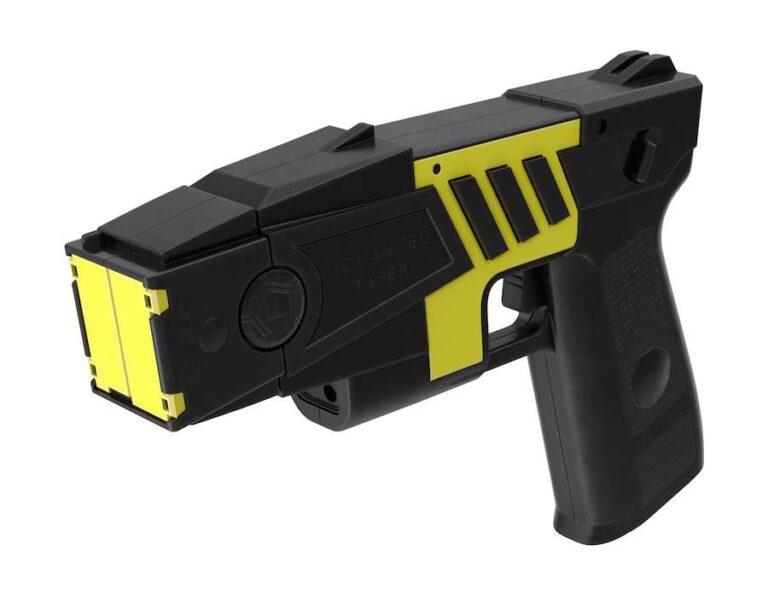Table of Contents
- Understanding the Key Legal Distinctions Between Stun Guns and Tasers
- Navigating Permit Requirements for Stun Guns and Tasers in Different Jurisdictions
- Detailed Analysis of Usage Restrictions and Compliance Guidelines
- Practical Recommendations for Legally Acquiring and Carrying Electroshock Weapons
- Final Thoughts
Understanding the Key Legal Distinctions Between Stun Guns and Tasers
When navigating the often confusing landscape of self-defense weapons, it’s crucial to understand the fundamental legal differences between stun guns and tasers. While both devices are designed to incapacitate an attacker temporarily, their classifications under the law vary significantly. Most jurisdictions regulate tasers more strictly due to their ability to incapacitate from a distance by firing electrified darts, which can penetrate clothing and deliver a powerful shock. In contrast, stun guns require direct physical contact to work, typically delivering a less intense shock and are subject to different permit requirements or outright restrictions.
These distinctions impact not only how you can legally carry and use these devices but also the process of obtaining a permit. Key legal factors to consider include:
- Ownership Restrictions: Some states or cities prohibit civilian possession of tasers altogether, while stun guns might be allowed with fewer or no permits.
- Usage Limitations: The law often places limits on where and how tasers can be used, such as in public spaces, requiring more rigorous training or certification.
- Age and Background Checks: Obtaining a permit for either device often involves stringent background checks, but tasers usually have tougher criteria.
Understanding these nuances ensures responsible ownership and compliance, helping you make informed decisions tailored to your jurisdiction’s legal framework.
Navigating Permit Requirements for Stun Guns and Tasers in Different Jurisdictions
When it comes to owning and carrying stun guns or tasers, the legal landscape can vary dramatically depending on where you live or plan to travel. Some states and municipalities classify these devices under the same regulations as firearms, requiring permits, registration, or mandatory training courses before possession. Others may permit stun guns with minimal restrictions but heavily regulate tasers due to their range and effectiveness. To navigate this complex web, it’s crucial to understand the exact classification of these weapons within your jurisdiction, ensuring compliance with local codes that might include:
- Age requirements and eligibility criteria for ownership
- Restrictions on carrying stun guns in public places or specific venues
- Permit application processes and associated fees
- Limitations on the type or strength of the device
Ignoring these nuances can result in severe penalties, including fines and even criminal charges. Many jurisdictions now require explicit permits for tasers due to their electronic incapacitating capabilities, often necessitating background checks or proof of legitimate need such as self-defense. Meanwhile, stun guns might be considered less regulated but still banned entirely in some areas. Staying informed through official government websites or consulting legal experts can provide the clarity needed to legally possess and responsibly use these non-lethal defense tools.
Detailed Analysis of Usage Restrictions and Compliance Guidelines
When it comes to usage restrictions, stun guns and Tasers each face unique regulatory frameworks that reflect their operational differences. While stun guns primarily deliver a painful electric shock without long-range capabilities, Tasers use patented technology to incapacitate from a distance with projectile darts. Consequently, many jurisdictions impose stricter controls on Tasers due to their increased range and potential for more serious injury. Common restrictions include prohibitions in certain public spaces such as schools, government buildings, and airports. Additionally, some states require mandatory training or specific age limits before ownership is granted, emphasizing responsible usage and public safety.
- Licensing requirements: Many states mandate special permits for Tasers but not for stun guns.
- Carry limitations: Some areas restrict concealed carry or open carry of either device in high-security zones.
- Usage protocols: Guidelines often stipulate when and how these devices may be deployed, especially by civilians and law enforcement alike.
Compliance with these regulations is crucial to avoid legal repercussions, including fines or criminal charges. Owners must remain vigilant about periodic changes in laws, as evolving legal landscapes reflect ongoing debates over self-defense rights versus public safety concerns. Ensuring proper documentation, such as carrying permit cards if applicable, and adhering to local ordinances protects users from inadvertent violations. By understanding and respecting these compliance guidelines, individuals can responsibly exercise their rights while mitigating legal risks associated with stun gun and Taser possession.
Practical Recommendations for Legally Acquiring and Carrying Electroshock Weapons
When considering the legal acquisition and carrying of electroshock weapons, it’s crucial to thoroughly research the specific laws in your jurisdiction. Regulations can vary widely between states and even municipalities, often dictating who can carry stun guns or Tasers, the required permits, and the conditions under which these devices can be used. Start by contacting local law enforcement agencies or checking official government websites to obtain the most up-to-date information. Additionally, be aware that some regions might require background checks, mandatory training courses, or registration before you are permitted to own or carry such a device.
Once you understand the local legal framework, approach the purchasing process responsibly. Opt for licensed dealers and request documentation proving the device’s compliance with local laws. Consider the following practical steps:
- Verify the device’s legality: Ensure the model is approved within your state or country.
- Complete any required training or certification: Some locations mandate this before granting permits.
- Keep permits and receipts accessible: Carry these documents alongside your electroshock weapon at all times.
- Respect restrictions on where you can carry: Schools, government buildings, and private properties may prohibit their possession.
By adhering to these best practices, you protect yourself from potential legal consequences and contribute to responsible ownership within your community.
Final Thoughts
In navigating the complex legal landscape surrounding stun guns and Tasers, understanding the distinctions in permit requirements is crucial for responsible ownership and use. Laws vary widely by jurisdiction, reflecting differing perspectives on safety and self-defense. By staying informed about these regulations, individuals can ensure they remain compliant while making empowered, thoughtful choices about personal protection. As always, consulting local laws and seeking professional legal advice is the best way to avoid pitfalls and confidently navigate this important aspect of self-defense.Check Our Other Blogs
- StunGun – Your Trusted Source for Stun Guns, Laws, and Self-Defense Tips
- PepperSprayLaws – Your Trusted Resource for Pepper Spray Information
- StunGunLaws – Your Trusted Guide to Stun Gun Legality and Safety





